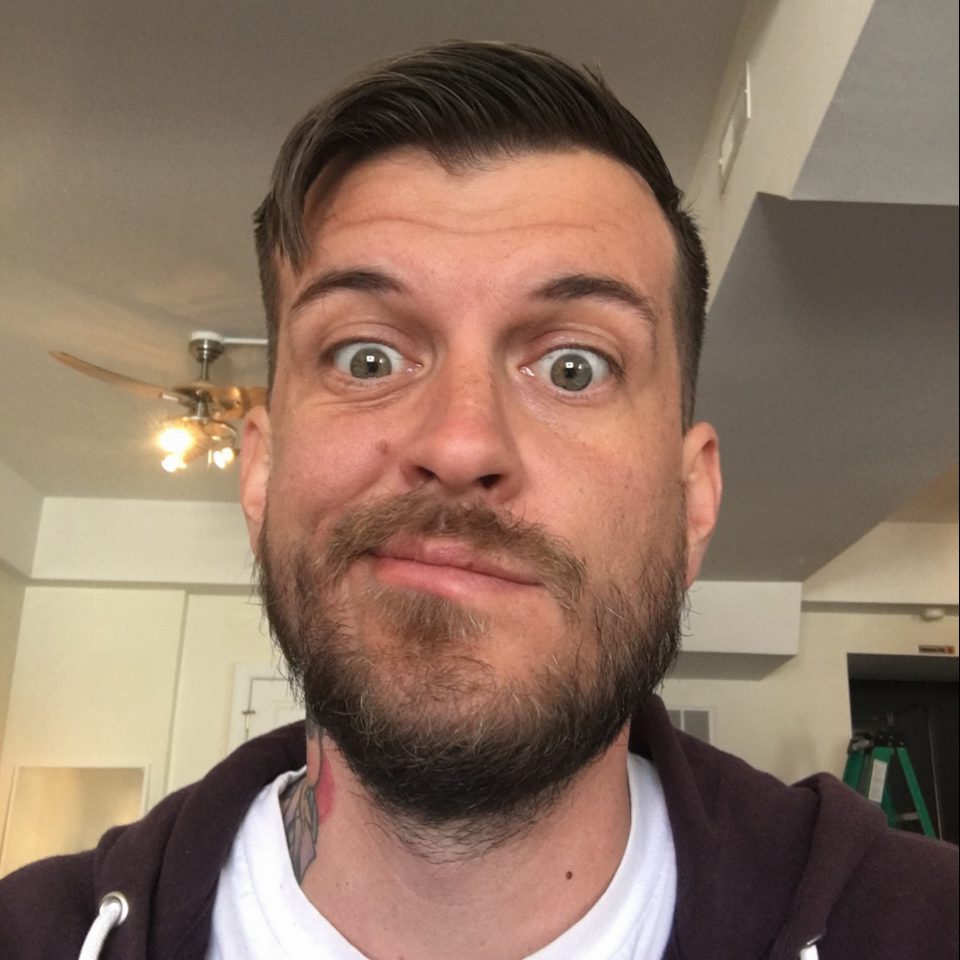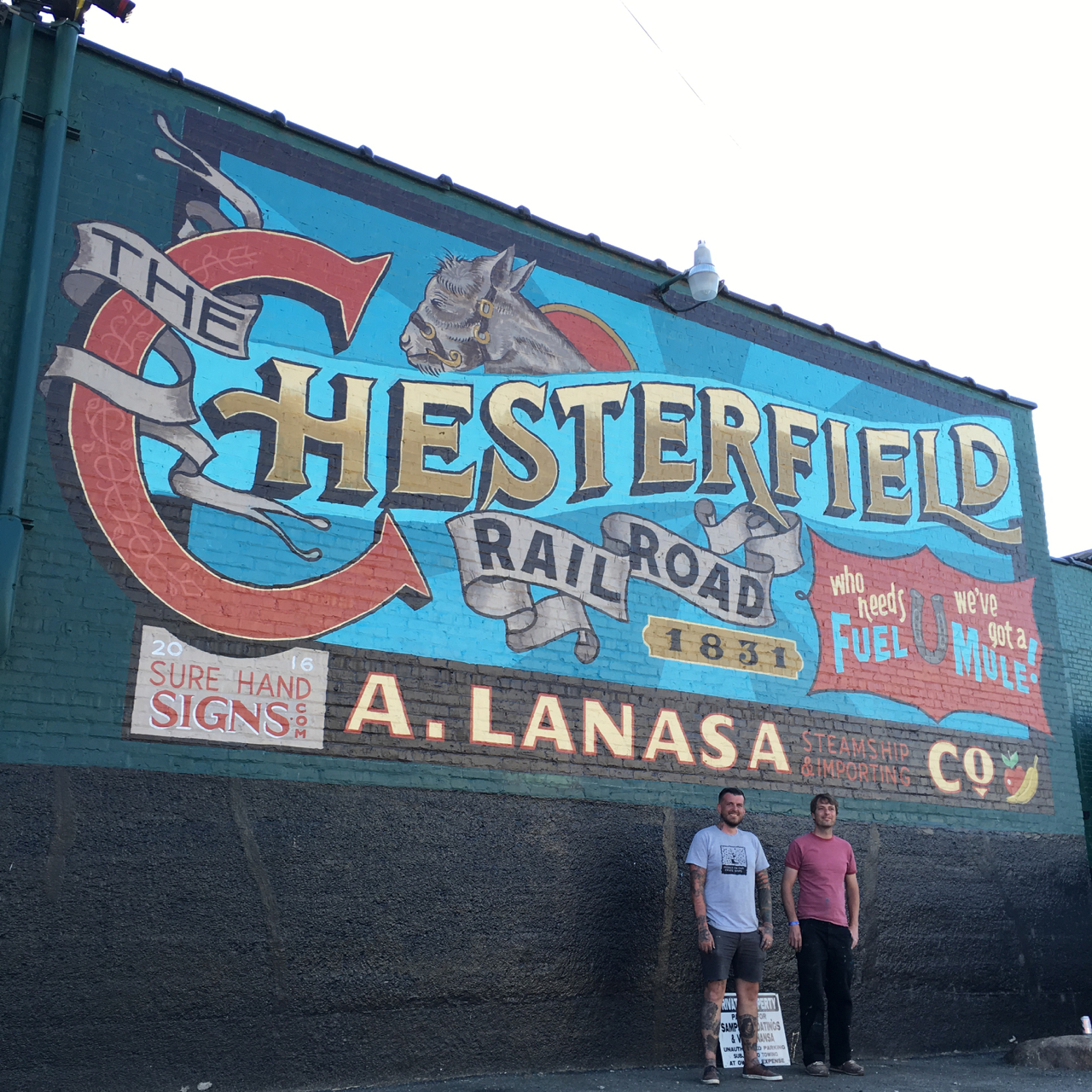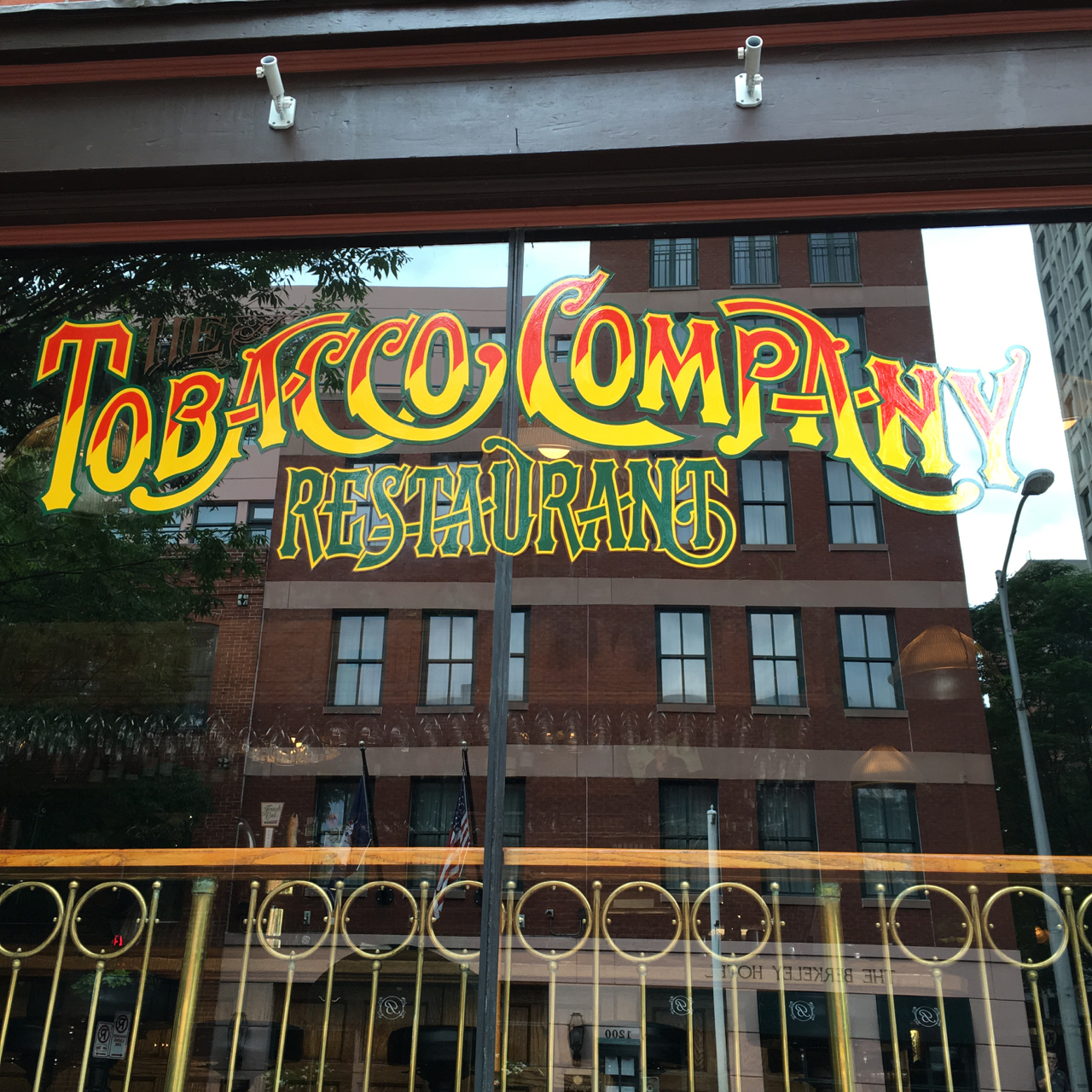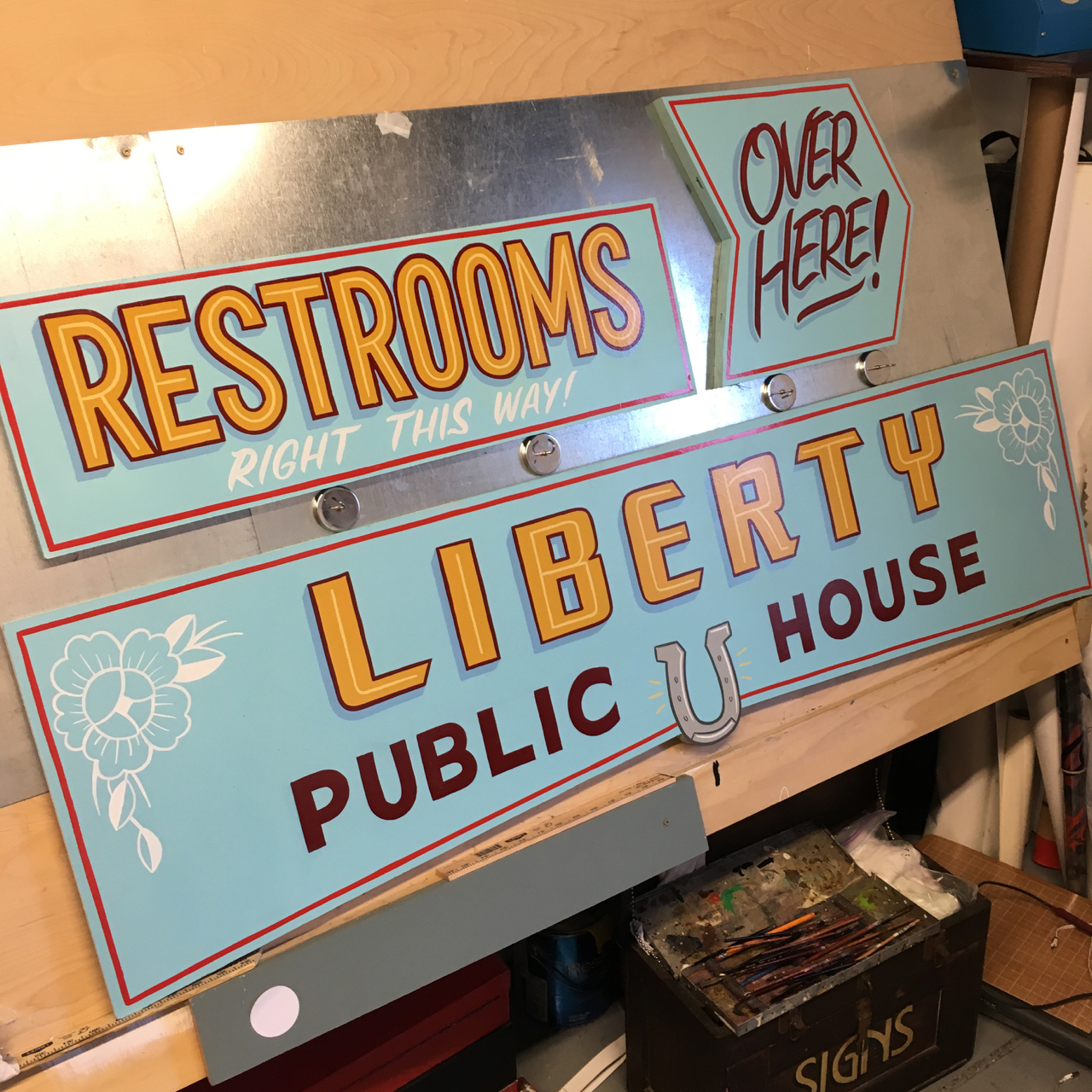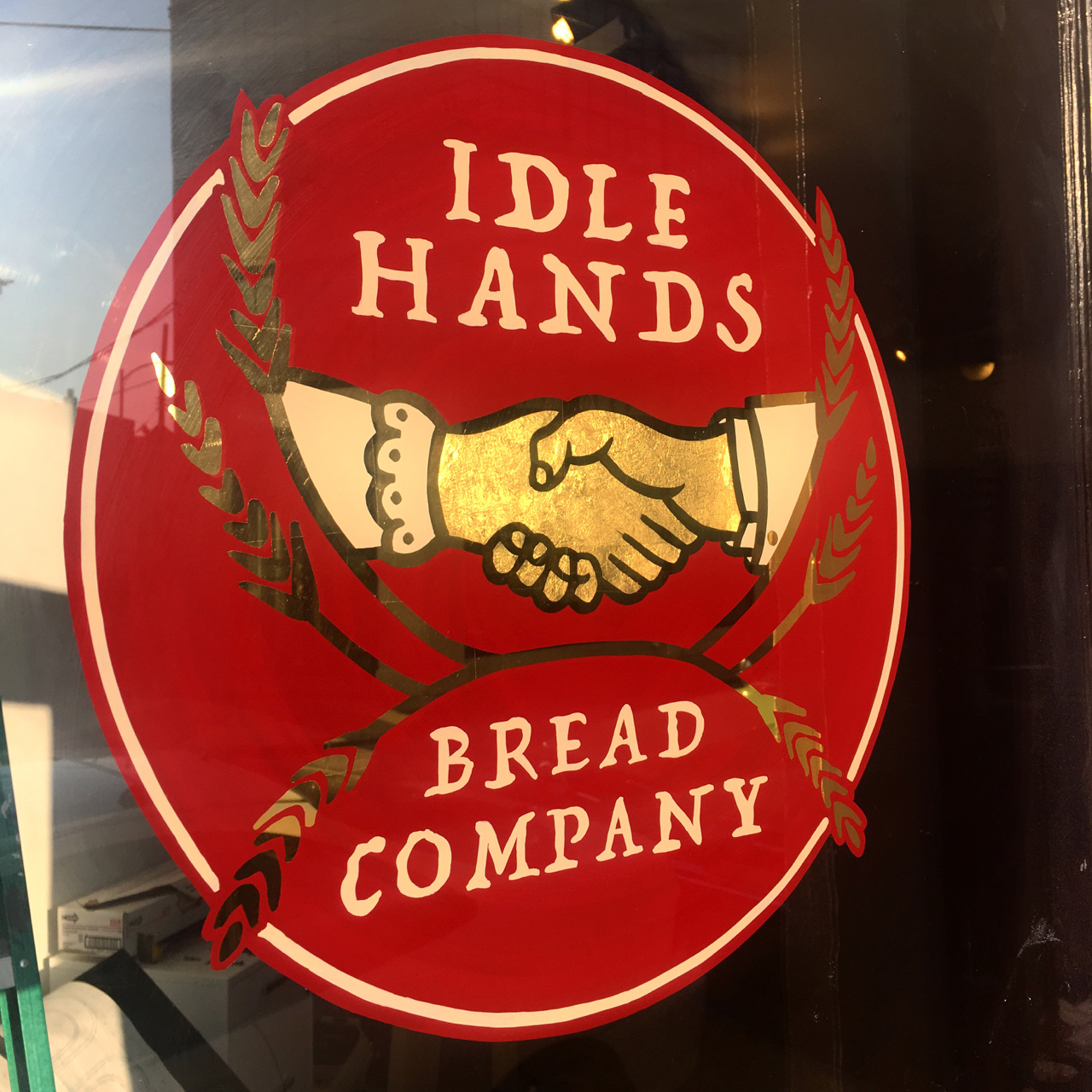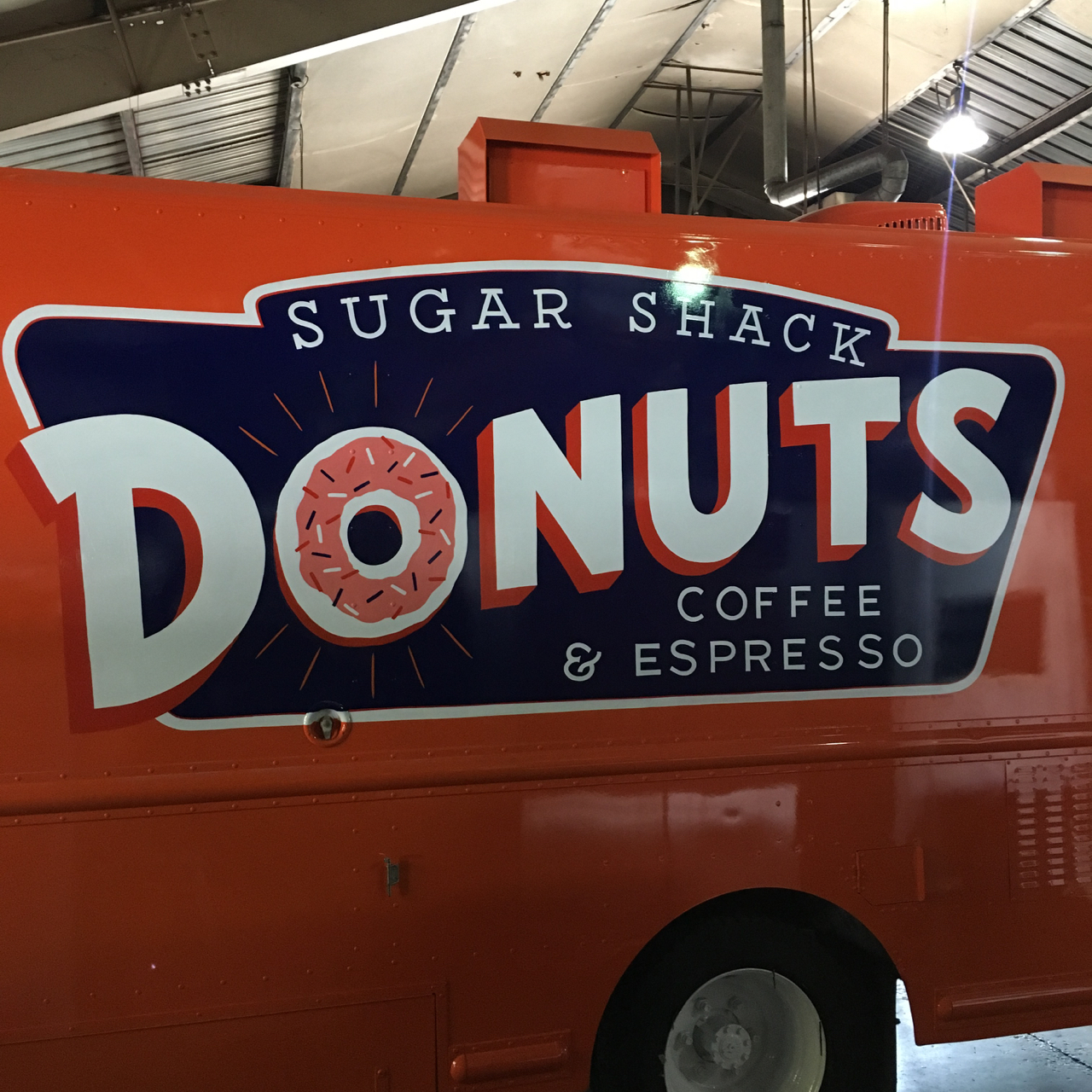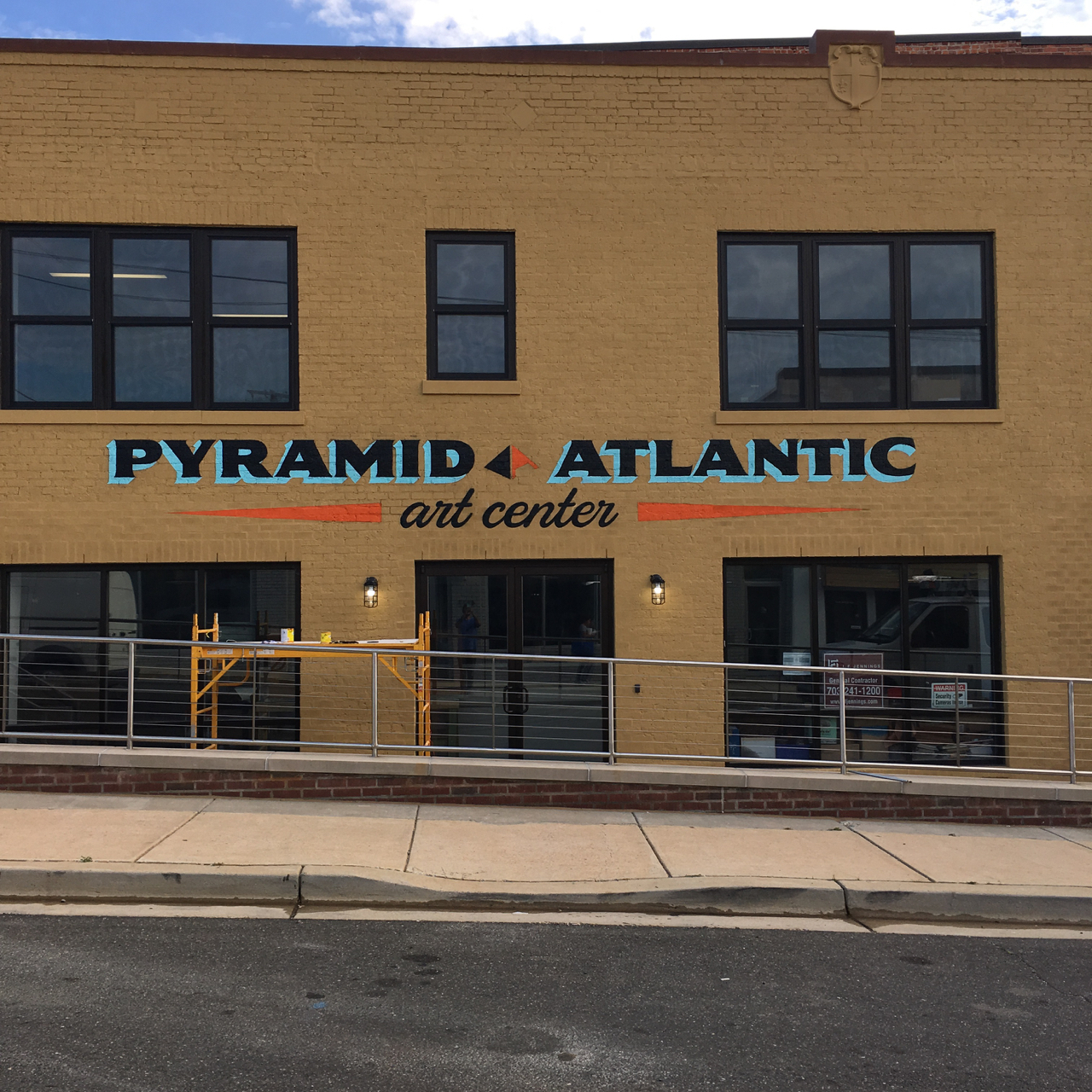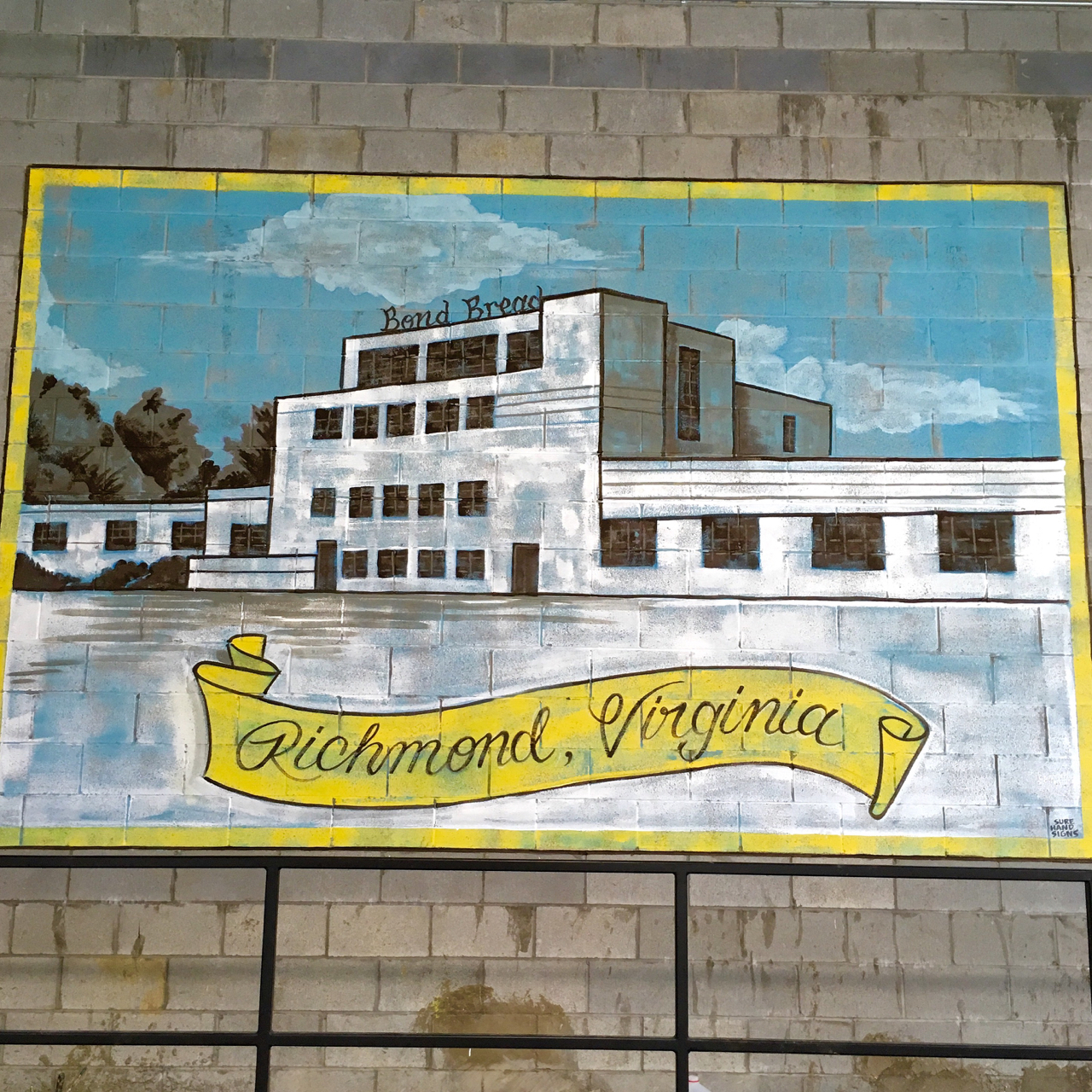On the last Tuesday of every month, I feature a fellow type lover from the Richmond, VA area.
Anywhere you look around this city, you're bound to spot the work of the two-man company Sure Hand Signs. Ross Trimmer and Aaron Cruse have been adding their hand painted touch here in Richmond and all along the east coast for years. I talked to Ross about why he started the business and what he loves most about sign painting in Richmond.
SARAH BARTON: You formed Sure Hand Signs in 2013. What prompted you to start painting letters? Have you always been interested in typography?
ROSS TRIMMER: For the most part I’ve always been very interested in type one way or the other. I worked for a skate shop in Northern Virginia growing up and worked that into a gig: I designed skateboards and t-shirts for the company, along with designing the storefront and in-store signage when the ship moved to a new location. After that I came to school at VCU and studied painting while also apprenticing to tattoo. I was also pretty heavily involved in graffiti for a lot of years, so drawing letters was always part of my life.
As for why I started painting signs, it was really kind of by accident. I was tattooing and came across an account for a guy who hand painted signs for a lot of tattoo shops. I really liked the aesthetic of it, saw he was also an old graffiti writer, and it kind of clicked that “Hey, I could do this.” I bought a bunch of paint and a few brushes that were remarkably inadequate and just started practicing every day while I was at work. The real heroes are the guys that worked at the shop with me, for dealing with the fumes every day haha.
SB: Can you walk us through your creative process step-by-step? How do you transfer or trace designs that will be reverse-painted?
RT: Generally we start with thumbnail sketches just to get a general idea of what the customer will like, once they’ve received a few we can usually narrow down a design and then draw a fleshed-out scaled version for whatever surface is being painted. As far as the transferring process, we use pounce patterns most of the time: a process where the paper drawing is perforated, then attached to the surface, and hit with a pad full of chalk to transfer a small rooted line pattern that can then be followed. Often with reverse windows we’ll just trace a reverse copy of the drawing, tape up the paper to the outside, and then paint on the interior.
SB: You not only paint signs but gilded windows, reverse-painted windows and murals as well. Do you have a favorite method and why?
RT: I enjoy gilding the most. The effects that can be reached with the techniques I’ve learned never cease to amaze me, and let's face it — everyone loves a sparkle. Honestly I enjoy everything I get to do though, the variety is part of what keeps it fun.
SB: I've seen you use a mahl stick for stability and to make sure you don't smudge anything that's already been painted. Do you have any other special tricks or tools?
RT: There’s a ton of stuff I’ve picked up along the way, but nothing really mind-blowing. I bet I can clean a window better than most professional window cleaners at this point though haha.
SB: Some of your murals have a faded "ghost sign" effect. How do you achieve that look?
RT: The ghost signs are generally put together by painting the entire image with a dry brush technique, where you’re not really fully loading the brush with paint. It only really works if you know the proper strokes that put together a letter though, that’s why they look old, as opposed to just improperly filled in. (NOTE FROM SB: I found some great Richmond ghost signs in last week's post!)
SB: What has been your favorite project and why? Hardest project?
RT: My favorites are always the ones where I’m hired to just “do what I do.” That level of trust from a business always leads to a better final product, just because of the pressure to not let someone down haha. Some people that have let me do that: Early Bird Biscuit Co., The gilded window at Y&H, the interior sign work I did at Liberty Public House to name a few. Also, we restored The Tobacco Company Restaurant window after it met an unfortunate end due to someone's beer-fueled window hatred. That was always one of my favorite signs in the city so it was an honor to bring it back to life. As far as most difficult, it’s never the work but sometimes the weather that makes 'em hard haha. It was 14 degrees out when we were working on the third story of the Hofheimer Building in Scott’s Addition. That’s definitely a cold I’ll never forget.
SB: Where do you get inspiration for your work? Do you use fonts and old signage as guides or do you come up with your own styles?
RT: I have a pretty good collection of older alphabets, vintage signs, old sign magazines, and a giant folder on my computer of work I’ve seen others do or in documentaries I’ve taken screenshots of, etc. I really don’t have a lot of interest in doing modern signs, or re-inventing anything. I’d just like to make solid sign work that looks even half as good as my predecessors.
SB: What's something that would surprise people about sign painting?
RT: It’s supposed to look precise, and good. Within the design industry there seems to be this idea that “hand lettering” is rough and non-proportional and just plain wonky. There is nothing worse than getting those files e-mailed to you by a client's designer.
SB: Who are some fellow Richmonders that inspire you?
RT: Mike Broth. He’s one of my oldest friends in this city, and that dude just doesn’t slow down. He is consistently putting in the work and also pushing himself to evolve what he does. He creates new work that is very definitely recognizable as his, but not just a carbon copy of his last 30 murals either. He’s definitely going to continue doing big things.
SB: What do you love most about being a creative in Richmond, Virginia?
RT: Doing what I do has given me a fun little peek into what a lot of great people are putting all of their heart into. I think that’s the best part about it: seeing this entire world someone is creating inside their space, and then having them call me to put up the signs that will draw people in. It’s a pretty great way to experience the massive changes I’ve seen happening in Richmond since I came here for school in 2001.
SB: What can we look forward to seeing from you in the next few months?
RT: I’m working on a few really fun projects over the next few weeks between here, D.C. and Roanoke. Lot’s of paint and gold happening, but I’ll leave out the specifics until they’re happening. Element of surprise and all!
Find more work from Ross Trimmer and Aaron Cruse at surehandsigns.com and on Instagram @surehandsigns.


